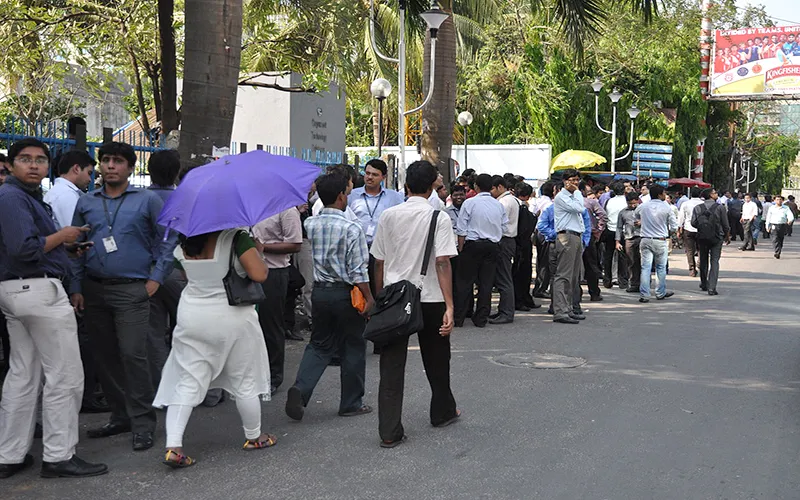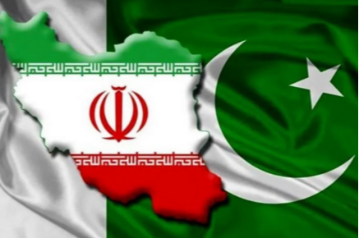In the last decade, the government at the Centre tried to paint a picture of a rising India with an emerging middle class that formed a big consumer market. India experienced high rates of growth, touching double digit growth between 2005 and 2008. The high growth rate led to poverty reduction. It has been estimated that around 300 million Indians are now in the middle class that made India a favoured destination for foreign direct investment. Many multinational companies vied with each other to capture a slice of the market.
But the rise of the middle class all over the world, including India, has been analysed recently by the Washington-based Pew Research Centre. According to it, between 2001 and 2011, the rise in prosperity and the rise of the middle class was concentrated in certain regions like China, South America and Eastern Europe. The middle class barely expanded in India, South East Asia, Africa and Central America during the same period. It defines middle income as living under $10 to $20 a day which is too high for India.
In India, the 'middle class' includes those who earn Rs. 7 400 per family a month (NCAER 2011-12 Human Development Survey). The latest socio economic caste census (SECC) reveals that 74.5 per cent rural inhabitants have a monthly income of less than Rs 5000. Very few have the purchasing power to afford a car, refrigerator, etc. Indeed the Survey reveals that only 11 per cent have fridges and only 2.5 per cent have cars.
The statistics about rural India is a stark reminder that most rural poor do not belong to the 'middle class' at all. They are poor even as compared to their urban brethren and 92 per cent households are earning less than Rs 10,000 a month. With many mouths to feed, most families cannot afford 'pukka' housing as well and 237 million households live in kuccha homes with one or less room. Compare this with the luxurious life style of the Indian urban rich whose houses and mansions can compete with those from the upper strata in western countries.
Though the urban data has not been officially released, preliminary reports indicate that there is gender inequality in urban areas and rural areas. There are 90 lakhs of women headed households in cities and 69 lakhs of women headed households in villages. They are among the poorest because little value is usually attached to their skills and women headed households have low bargaining power as well as little marketing skills. Cooperatives like Kutumbashree of Kerala can help them in successfully earning more.
Clearly the picture emerging from the recent SECC survey is one where there is huge inequality of income and consumption though it may not be reflected in the Gini coefficient (Gini Index of 0 represents perfect equality) which according to the Government of India has actually declined from 36.8 per cent in 2010-11 to 33.4 per cent in 2011-12 (Economic Survey 2013-14). But non income inequalities have grown like in health and education.
In a recent volume on Human Development in Global South (Institute for Human Development), it has been pointed out by scholars that the main point about the rise in youth unemployment in India is the lack of good quality education. While the number of students has increased, the quality of teachers has deteriorated. There has been a decline in basic reading levels and the percentage of children in standard V able to read a Standard II level text declined from 54 per cent in 2010 to 47 per cent in 2013 ( Economic Survey 2013-14). If there is no improvement in the quality of education, there will be more inequality as people entering the work force will find themselves unemployable.
The education structure has to change and higher education which is increasingly under private sector should be made affordable. There is a mushrooming of private universities which have stellar annual fees which few can afford from rural or urban areas. This gap has to be filled which would mean that the state has to invest more in education just like it did in the western world and created universities that are now famous centres of higher learning. Also, technical education, vocational training as well as science education have to be emphasized.
There are 35 lakh households with no income in urban areas - making one wonder how they are able to survive in present times with high food prices. They probably are doing manual odd jobs from time to time. Even in rural areas, doing manual casual jobs seems to be the mode of survival for 51 per cent of village households. There is a lack of non-farm jobs and half the rural population also lacks education, skills and capital.
The rural economy is under stress because there is an increasing problem in the availability of land and 30 per cent of households have no land. Encroaching of rural land for manufacturing or infrastructure development purposes is actually limiting the existing sources of livelihood for the rural poor.
Lack of mobility is also a cause of rural deprivation. In most villages, the public transport system is poorly developed and many remote parts of India are still not connected with motorable roads to nearby towns. This also sets limits to commercial activities of rural based small manufacturers who could otherwise have gone to nearby towns for the day to sell their wares. This is especially true for women vendors of homemade foodstuff who can earn a living if safe and reliable transport system is made available.
Hence, a lot has to be done by the Modi government immediately. The caste census has not been released yet and it too will reveal big surprises. But it is important to face up to the stark reality and the extraordinary stress experienced by rural India and find solutions to the pressing problems. Emphasis and implementation of digital India, Make in India, Smart cities' programmes ought to take into account the problems faced by the poor.
(The writer is a Senior Fellow at Observer Research Foundation, Delhi)
The views expressed above belong to the author(s). ORF research and analyses now available on Telegram! Click here to access our curated content — blogs, longforms and interviews.




 PREV
PREV


